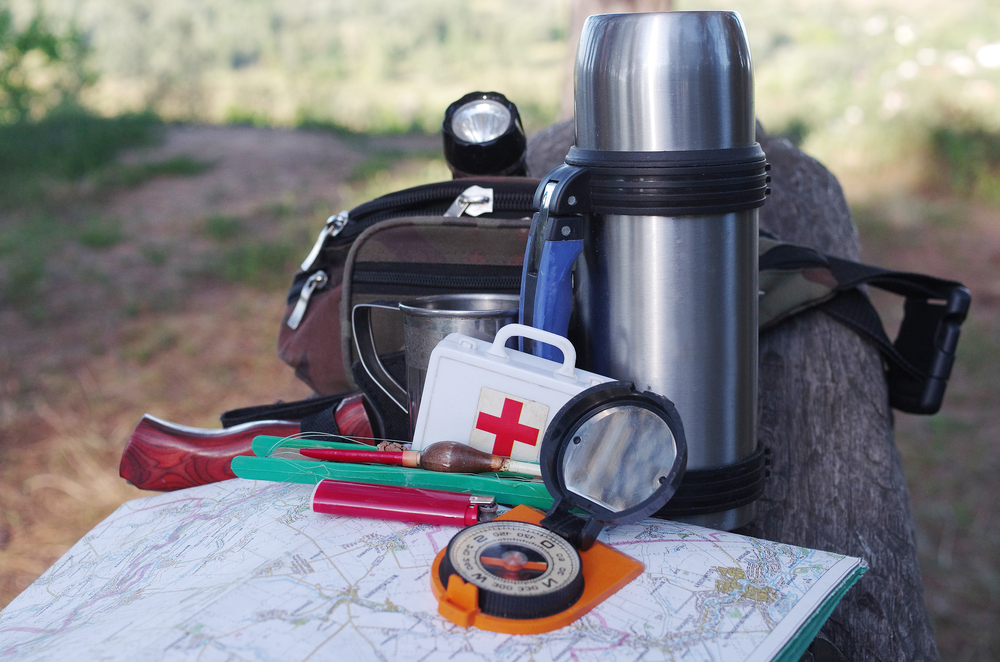Venturing into the wilderness offers a unique sense of freedom and connection with nature. Whether you are an experienced hunter or new to outdoor adventures, safety should always be your top priority as nature is also unpredictable. Here, we provide essential wilderness survival tips to help you stay safe in the woods.
These practical guidelines will ensure your outings are stress-free as you’ll be prepared, allowing you to focus on the thrill of the hunt.
Essential Gear For Wilderness Survival
Having the right gear can significantly improve your safety and comfort while in the woods. Here are some must-have items:
- First Aid Kit: A comprehensive kit is essential for treating minor injuries and managing emergencies until help arrives.
- Navigation Tools: Carry a map, compass, and GPS device to help you navigate and avoid getting lost.
- Fire Starters: Pack waterproof matches, a lighter, and fire starters to ensure you can build a fire for warmth, cooking, and signaling.
- Shelter: Bring a lightweight tent, tarp, or emergency blanket to protect yourself from the elements.
- Water and Purification: Carry enough water for your trip and a portable water filter or purification tablets.
- Food: Pack high-energy and protein-rich non-perishable foods that are easy to eat or simple to prepare.
- Clothing: Dress in layers and choose moisture-wicking, quick-drying fabrics. Remember a hat and gloves for extra protection and a pair of dry socks.
Navigating And Staying Oriented
Getting lost in the woods can be a harrowing experience. Here are tips to help you stay on course:
- Plan Your Route: Before you head out, study the area and plan your route. Share your plans with someone who is not joining you.
- Mark Your Trail: Use bright markers or ribbons to mark your trail as you go. This can help you find your way back. If you have a mobile phone, you may be able to track your way in an app additionally, but know good reception is not always available so this should not be the only method used.
- Check Landmarks: Identify and remember natural landmarks such as rivers, mountains, and unique trees to help you navigate.
- Regular Check-ins: Periodically check your map and compass to ensure you are on the right path.
Building A Fire
A fire can be a lifesaver in the wilderness, providing warmth, cooking capabilities, and a way to signal for help. Here’s how to build a fire safely:
- Choose a Safe Spot: Find a clear, flat area away from trees, bushes, and dry leaves. Use a fire pit if available.
- Gather Materials: Collect dry leaves, small twigs, and larger branches. Make sure you have enough fuel to keep the fire going.
- Build a Base: Create a small mound of tinder and kindling at the center of your fire site.
- Light the Fire: Use your waterproof matches or lighter to ignite the tinder. Gradually add more giant sticks and branches as the fire grows.
- Maintain and Extinguish: Keep the fire small and manageable. When you’re done, ensure the fire is entirely out before leaving.
First Aid And Emergency Response
Accidents can happen, even to the most prepared hunters. Knowing basic first aid and emergency response techniques can be crucial:
- Assess the Situation: Stay calm and assess the situation. Check for injuries and decide if you need to call for help.
- Perform Basic First Aid: Clean and dress wounds, immobilize fractures, and manage bleeding using your first aid kit.
- Signal for Help: Use a whistle, flashlight, or fire to signal for help. A reflective emergency blanket can also be used to attract attention.
- Stay Put: If you are lost or injured, stay in one place to make it easier for rescuers to find you.
Best Practices For Hunting Safety
Hunting safety extends beyond survival skills. Here are the best practices to keep in mind:
- Wear Hunter Orange: Make yourself visible to other hunters by wearing bright orange clothing.
- Communicate: Use hand signals or two-way radios to communicate with your hunting party.
- Know Your Target: Always identify your target and what is beyond it before shooting.
- Follow Firearm Safety Rules: Treat every firearm as if it is loaded, keep your finger off the trigger until ready to shoot, and never point your gun at anything you don’t intend to shoot.
Stay Safe And Enjoy The Hunt
Staying safe in the woods is paramount for a successful hunting season. By following these wilderness survival tips, you can ensure that your outdoor adventures are enjoyable and secure. We are committed to supporting you with valuable resources and affordable hunting lease insurance at Hunting Lease Bind.
And be sure to secure your hunting lease insurance with a trusted provider for a truly stress-free hunting experience! The outdoors team at Breckenridge Insurance provides affordable rates on smart hunting lease insurance—just $247.50 for up to 2,000 acres at Hunting Lease Bind and you can save time by buying online. Be sure to follow Hunting on Leased Land Facebook page too for helpful hunting resources.

